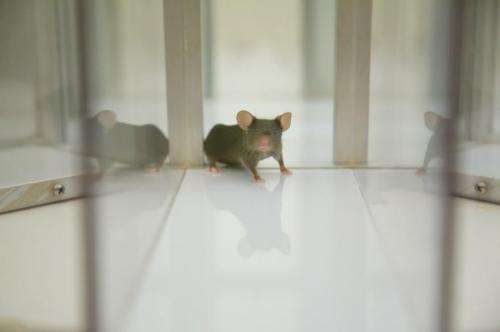Statins reverse learning disabilities caused by genetic disorder

UCLA neuroscientists discovered that statins, a popular class of cholesterol drugs, reverse the learning deficits caused by a mutation linked to a common genetic cause of learning disabilities. Published in the Nov. 10 advance online edition of Nature Neuroscience, the findings were studied in mice genetically engineered to develop the disease, called Noonan syndrome.
The disorder can disrupt a child's development in many ways, often causing unusual facial features, short stature, heart defects and developmental delays. No treatment is currently available.
"Noonan syndrome affects one in 2,000 people, and up to half of these patients struggle with learning disabilities," explained principal investigator Alcino Silva, professor of neurobiology, psychiatry and psychology at the David Geffen School of Medicine at UCLA.
"Our approach identified the mechanism causing the disease, as well as a treatment that reversed its effects in adult mice. We are excited about these findings, because they suggest that the treatment we developed may help the millions of Noonan patients with intellectual disabilities."
While many genes contribute to Noonan syndrome, a single gene causes about half of all cases. This gene encodes for a protein that regulates another protein called Ras, which controls how brain cells talk to each other, enabling learning to take place.
Working with first author Young-Seok Lee, Silva discovered that the Noonan mutation creates hyperactive Ras, which disrupts cellular conversations and undermines the learning process.
"The act of learning creates physical changes in the brain, much like grooves on a record," said Silva, who is a member of the UCLA Brain Research Institute and UCLA Integrative Center for Learning and Memory.
"Surplus Ras tips the balance between switching signals on and off in the brain. This interrupts the delicate cell communication needed by the brain to record learned information."
"Hyperactive Ras signaling in the brain is to blame for Noonan's neurological and behavioral symptoms," said Lee, a former UCLA postdoctoral researcher who now runs his own lab at Chung-Ang University in Seoul, Korea. "An overabundance of Ras prematurely alters the brain's synapses, leaving no place for the brain to record the changes necessary for learning."
Drawing upon Silva's previous research with neurofibromatosis 1, another Ras-influenced disease, the UCLA team treated the mice with lovastatin, an FDA-approved statin drug currently in wide clinical use.
Here's how it works: statin drugs lower cholesterol by blocking the synthesis of certain fat molecules that Ras requires to function. The resulting drop in Ras activity allows brain cells to communicate properly, allowing normal learning to take place.
"Noonan syndrome interferes with the changes in brain cells needed for learning, which results in learning deficits," Silva said. "Statins act on the root of the problem and reverse these deficits. This enables the process of learning to physically change the brain and create memory."
When the UCLA team treated adult Noonan mice with lovastatin, they discovered that the drop in Ras activity dramatically improved the animals' memory and ability to remember objects and navigate mazes.
"We were amazed to see that statin treatment restored the adult animals' cognitive functions to normal. Traditionally, science assumes that therapy needs to start in the fetal stage to be effective," explained Silva. "Our research suggests that the leading gene mutation responsible for Noonan syndrome plays critical roles not only in fetal development, but also in how well the adult brain functions."
According to Silva, UCLA's approach could help the estimated 35 million Americans who struggle with learning disabilities. The next step will be to bring the drug therapy into clinical studies for Noonan. For details about trial locations, contact the Rasopathies Network.
More information: Mechanism and treatment for learning and memory deficits in mouse models of Noonan syndrome, Nature Neuroscience, DOI: 10.1038/nn.3863
















